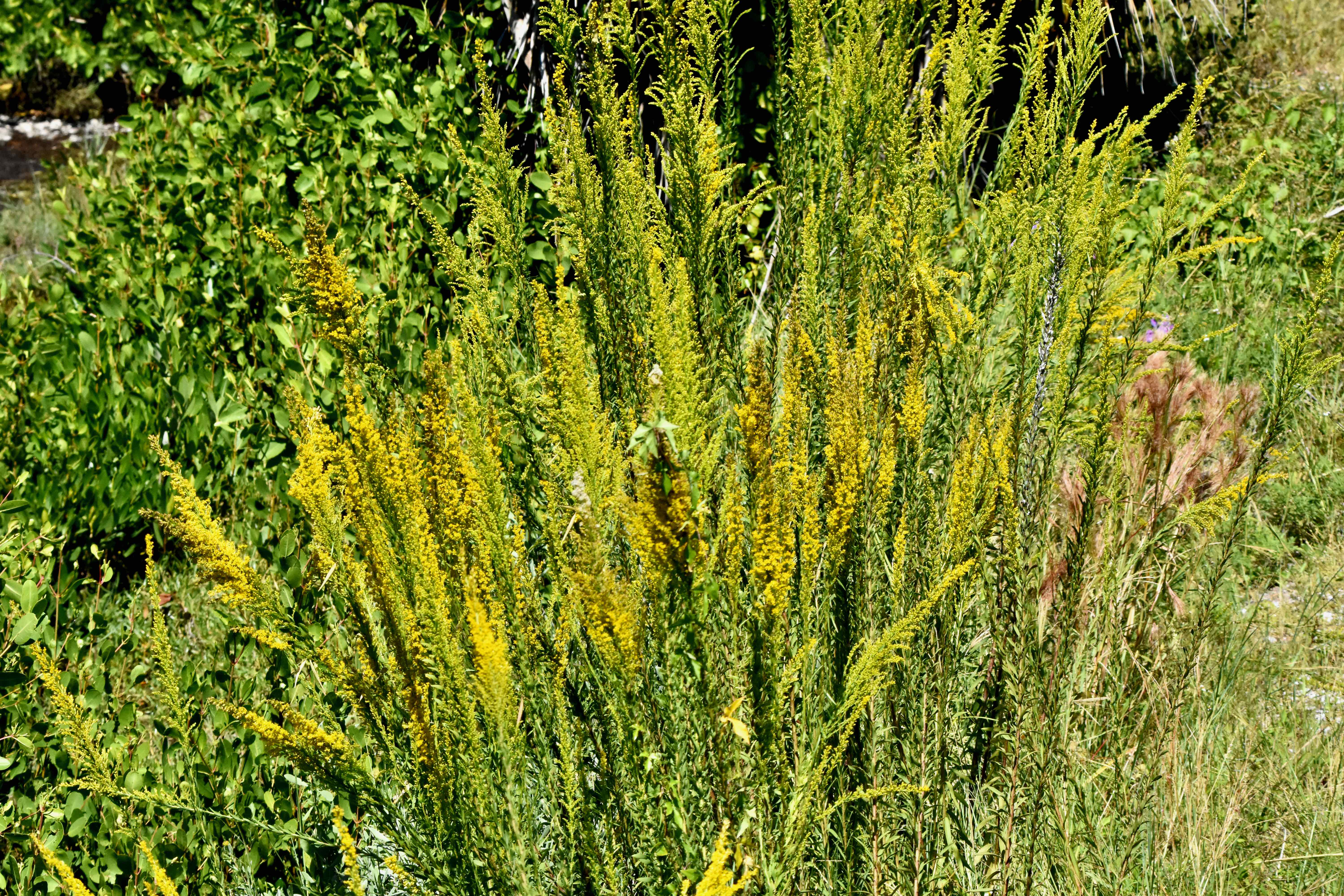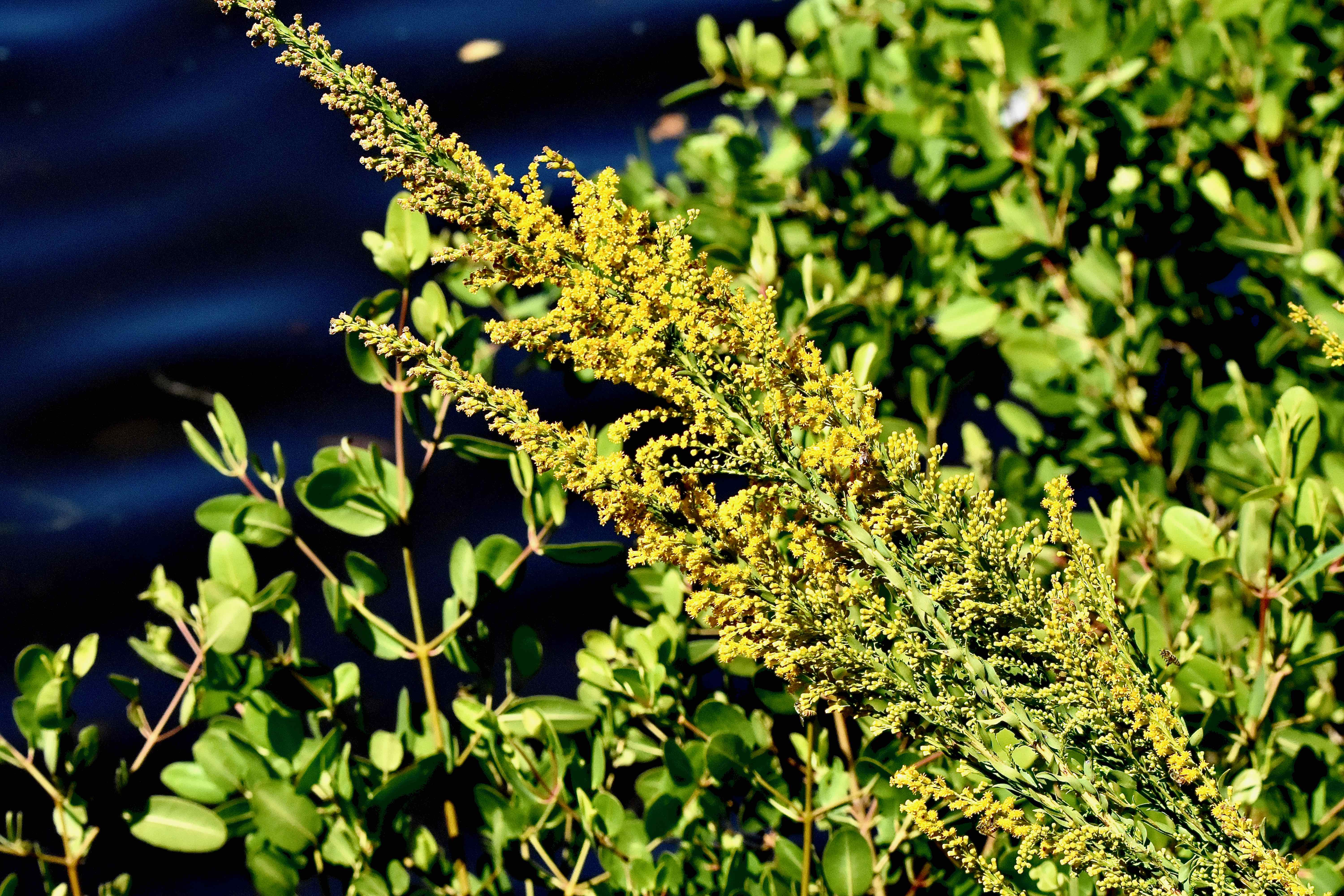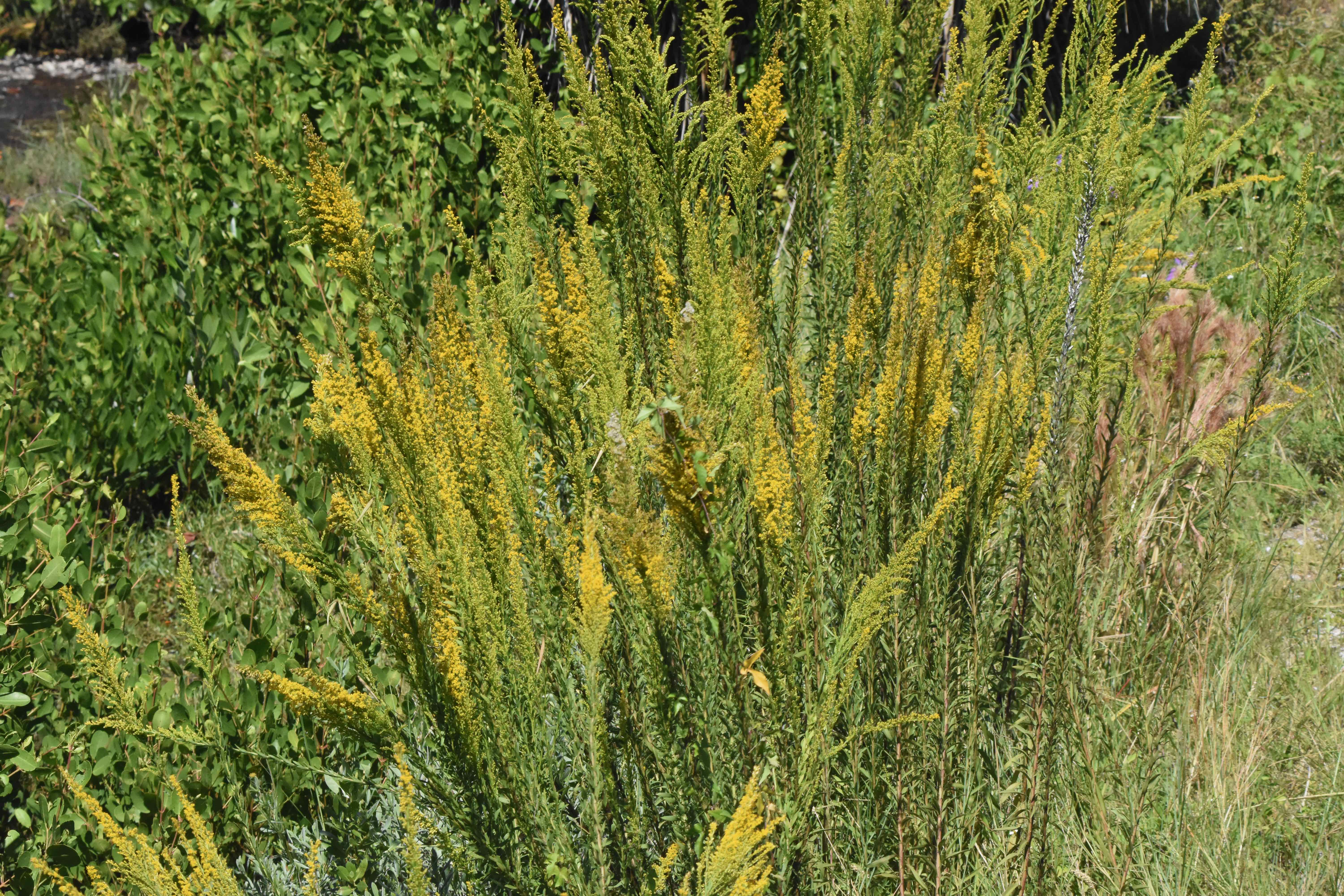
Seaside goldenrod, photographed at J.N. "Ding" Darling National Wildlife Refuge, Sanibel, Lee County, in October 2016.
There are few things as beautiful on God's good earth than a mass of goldenrod in full bloom against a brilliant blue October sky. Especially this guy, seaside goldenrod, Solidago sempervirens.
And there are few things in nature as important to the scheme of things as seaside goldenrod. It's food and shelter to a host of creatures at a critical time of the year for some, and it's an important bulwark against the forces of erosion. Before you sneeze at this, it's worth noting that goldenrod is not the source of problematic pollen for people with allergies that causes so much weezing at certain times of the year. Blame plants like ragweed that rely on the wind for pollination. Goldenrod, instead, uses insects — bees and butterflies, prominently — to distribute its genetic material from plant to plant. And that's one reason why seaside goldenrod is so important.
Seaside goldenrod is native to Florida and much of eastern North America, found along both the Gulf and Atlantic coasts from Texas to Canada. It's also found as far inland as Illinois, Indiana and Michigan, but if you drill down on United States Department of Agriculture distribution maps, you'll see that it's growing in vicinity of the Great Lakes. Rarely is it found far from large bodies of water. It is a perennial.
Seaside goldenrod is tall, usually with a graceful arch, and a long flower stalk at the top. When in bloom — August, September and October — it can reach eight to 10 feet tall, according to some sources we've read. The flowers are densely packed, brilliant yellow and larger than other goldenrod species. The leaves are oblong or lance-shaped, thick, varying in size from eight inches long and more than an inch across at the base of the plant, gradually becoming smaller and smaller higher up the plant.
Rhizomes, or underground stems, help spread seaside goldenrod into a mass. It grows in beach grasslands, blowouts (places where sand has been blown away) and transition areas and in salt marshes. It begins building dunes by trapping sand and other blown material, then its long roots help hold the dunes in place. It is drought, salt and salt spray tolerant, making it perfectly adapted for beach and salt marsh habitats. Beach managers have used seaside goldenrod for erosion control, but it is difficult to grow from seed.
Beyond that, seaside goldenrod's gorgeous yellow flowers help fuel monarch butterflies as they fly way south during their annual migration. In winter, vegetation from the previous summer provides habitat for gall-producing insects, including some beneficial wasps. The larvae inside those galls become an important source of food for birds. Its dense vegetation provides cover for nesting birds, including killdeer, willets and piping plovers.
According to the USDA, goldenrods have been important items in the traditional medicine cabinet, but not this one. However, Thomas Edison tried to use the plant's latex sap to make rubber.
Seaside goldenrod is also known as salt marsh goldenrod. It is a member of Asteraceae, the family of daisies and sunflowers. One more taxonomic note: There are two varieties or subspecies of seaside goldenrod, S. sempervirens, found in the northern part of its range, and S. mexicana, found in the south, including Florida.
Click on photo for larger image
Links for Seaside Goldenrod



